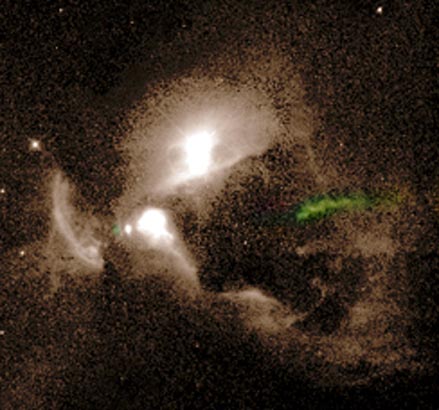Explanation: Planets condense from disks. Several new Hubble Space Telescope pictures of stars surrounded by disks were released earlier this week. Since the glare of the central star usually makes a surrounding disk hard to see, prior observations in radio and infrared light were used to isolate systems where the disk was edge-on, blocking much of the central starlight. One such disk system, Haro 6-5B, is shown above in false color. Here, the central disk confines the emitted light into an hourglass shape. Complex dust clouds appear dark. A powerful protruding jet is shown in green. This budding planetary system measures 0.2 light-years across. Quite possibly, our own Solar System looked like this about 5 billion years ago.
1999 2000 2001 2002 2003 2004 2005 2006 2007 2008 2009 2010 2011 2012 2013 2014 2015 2016 2017 2018 2019 2020 2021 2022 2023 2024 2025 |
Yanvar' Fevral' Mart Aprel' Mai Iyun' Iyul' Avgust Sentyabr' Oktyabr' Noyabr' Dekabr' |
NASA Web Site Statements, Warnings, and Disclaimers
NASA Official: Jay Norris. Specific rights apply.
A service of: LHEA at NASA / GSFC
& Michigan Tech. U.
|
Publikacii s klyuchevymi slovami:
disk - jet - pylevoi disk - dzhet
Publikacii so slovami: disk - jet - pylevoi disk - dzhet | |
Sm. takzhe:
Vse publikacii na tu zhe temu >> | |
